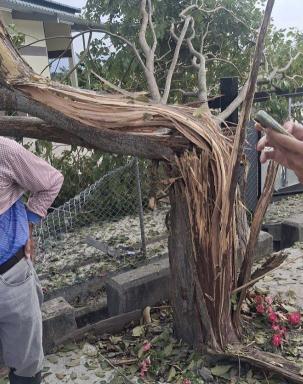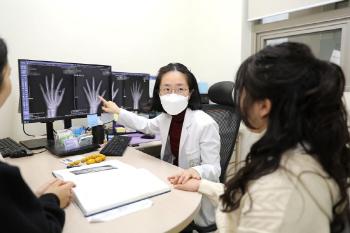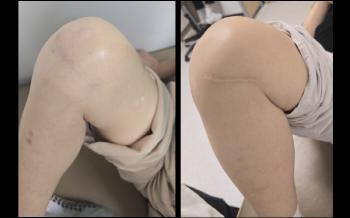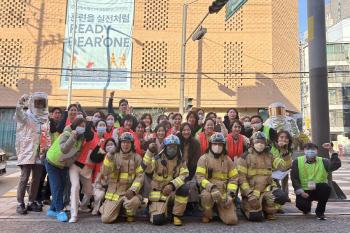What is the treatment and prevention of the anterior cruciate ligament of the knee?Solving questions in the joint talk of Suchan's joint on YouTube at Himchan Hospital
Introduce detailed information on the knee anterior cruciate ligament, which is familiar but does not know well about the exact location and role of Su-chan's Joint Talk on YouTube at Himchan Hospital. CEO Lee Soo-chan, an orthopedic surgeon, and Kim Tae-hyun, a medical director, will work together to inform accurate information on the anterior cruciate ligament, various treatments, and problems that may arise when not receiving treatment.
The cross-shaped anterior cruciate ligament, which is about 3.5cm in size, is a ligament that is responsible for the stability of the knee, prevents the tibia (shinbone) from being pushed forward against the femur (thigh bone), and prevents the tibia bone from turning left and right while the knee is bent. When external force is applied, 30% of the cases are damaged by contact, and 70% of the cases are damaged by non-contact because the knee is twisted due to posture during exercise. If you land after jumping during exercise and slow down quickly while running, the cruciate ligament ruptures at a high rate. In Korea, about 15,000 cases of cruciate ligament damage occur annually, 70% of which are male patients, especially in their 20s and 30s.
Director Kim Tae-hyun should suspect cruciate ligament damage if there is a situation in which he is unable to walk in pain with the sound of "Exercise"If it's ruptured, it causes a lot of swelling in the knee."
When the cruciate ligament is damaged, surgical treatment is mostly required. If left untreated, the pressure on cartilage in the joint increases due to instability of the knee. In addition, it is highly likely that the contact point between the tibia and the femur will move backward and eventually develop into arthritis by increasing the pressure on the inner joint. In the case of partial rupture, non-surgical treatment may be attempted, but instability may progress depending on the degree of damage and the level of activity of the patient.
In fact, it is known that the probability of instability occurring after non-surgical treatment reaches 11~62%. In particular, surgical treatment is required if there is instability accompanied by symptoms, or if you are young and more than 50% of the ligaments are ruptured.
The cross-shaped anterior cruciate ligament, which is about 3.5cm in size, is a ligament that is responsible for the stability of the knee, prevents the tibia (shinbone) from being pushed forward against the femur (thigh bone), and prevents the tibia bone from turning left and right while the knee is bent. When external force is applied, 30% of the cases are damaged by contact, and 70% of the cases are damaged by non-contact because the knee is twisted due to posture during exercise. If you land after jumping during exercise and slow down quickly while running, the cruciate ligament ruptures at a high rate. In Korea, about 15,000 cases of cruciate ligament damage occur annually, 70% of which are male patients, especially in their 20s and 30s.
Director Kim Tae-hyun should suspect cruciate ligament damage if there is a situation in which he is unable to walk in pain with the sound of "Exercise"If it's ruptured, it causes a lot of swelling in the knee."
When the cruciate ligament is damaged, surgical treatment is mostly required. If left untreated, the pressure on cartilage in the joint increases due to instability of the knee. In addition, it is highly likely that the contact point between the tibia and the femur will move backward and eventually develop into arthritis by increasing the pressure on the inner joint. In the case of partial rupture, non-surgical treatment may be attempted, but instability may progress depending on the degree of damage and the level of activity of the patient.
In fact, it is known that the probability of instability occurring after non-surgical treatment reaches 11~62%. In particular, surgical treatment is required if there is instability accompanied by symptoms, or if you are young and more than 50% of the ligaments are ruptured.
|
This article was translated by Naver AI translator.




